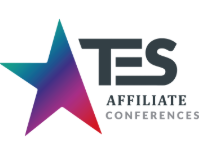Room Sized One-Ton “Baby” Celebrates 60 Years of Computing
MANCHESTER, ENGLAND — It was June 21, 1948 when Geoff Tootill and his university laboratory partners delivered the Small Scale Experimental Machine. For the first time in history, a machine was capable of containing memory that could store an executable program and not need to be rebuilt in between tasks. “Baby,” used a mere 128 bytes of memory when it successfully determined the highest factor of a number, and its one-ton bulk only took up a single room while doing so.“We were extremely excited,” Tootill told BBC News about the invention of what many consider the first modern PC. “We congratulated each other and then went and had lunch in the canteen.”
Not the first machine capable of performing more than one task during its lifetime, Baby was unlike predecessors such as the American ENIAC – capable of calculating shell trajectory for the US Army — or the UK Colossus – which decrypted German High Command messages during World War II — in as much as it did not require days of rewiring in order to switch between programming tasks.
“It was the earliest machine that was a computer, in the sense of what everyone today understands a computer to be,” Chris Burton of the Computer Conservation Society explained to BBC News. “It was a single piece of hardware which could perform any application, depending on what program you put in.”
What made all the difference was its cathode ray tube (CRT) memory, uniquely capable of storing programs. Binary information was represented by electrical charges on the CRT screen, with positive charges representing ones and negative charges representing zeros. An attached metal grid read the various charges and a series of dots and dashes displayed on another CRT that was wired parallel to the memory.
“It was an extraordinary analogue for today’s DRAM,” observes Burton.
The whopping 1024 bits of memory stands in stark contrast to modern systems sporting a lightweight 1 GB DRAM chip that fits easily in the palm of a hand and stores more than 2 billion bits.
The Manchester University team used its limited technology to create impressively complex programs, even if they had limited efficiency. The machine’s test program was written by the now late Tom Kilburn. While Baby crunched away at the highest factor of a prime number, the team had plenty of time to see how the system was dealing with the stress of thinking on its own.
In time, the Manchester Mark I learned from Baby’s early steps and in 1951 the Ferranti Mark I basely beat the UNIVAC I onto the market as the first general purpose commercial computer.
A working replica of Baby is on display at the Museum of Science and Industry in Manchester – and its four surviving creators will be honored at the Manchester University and the British Computer Society at a Manchester ceremony.









